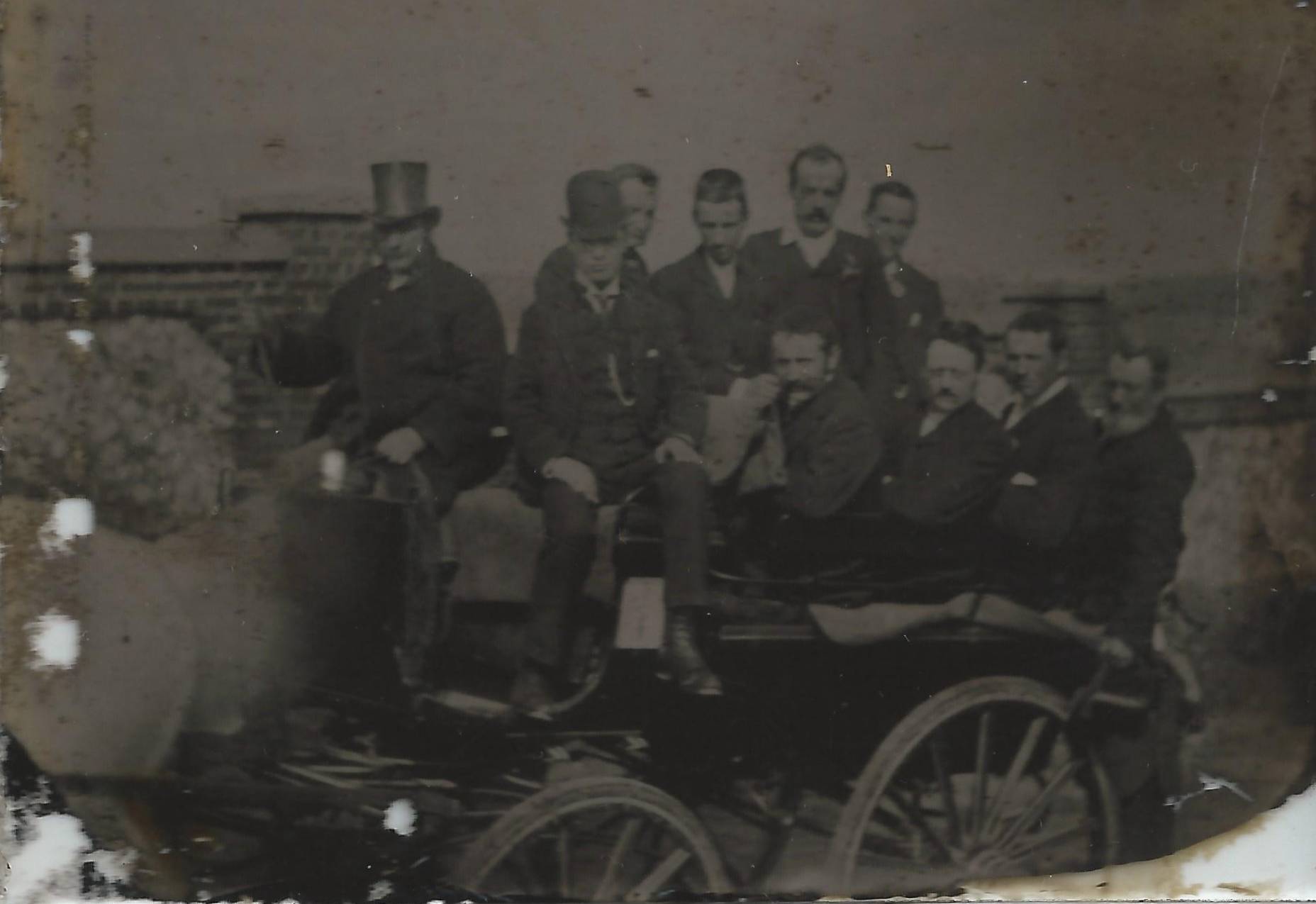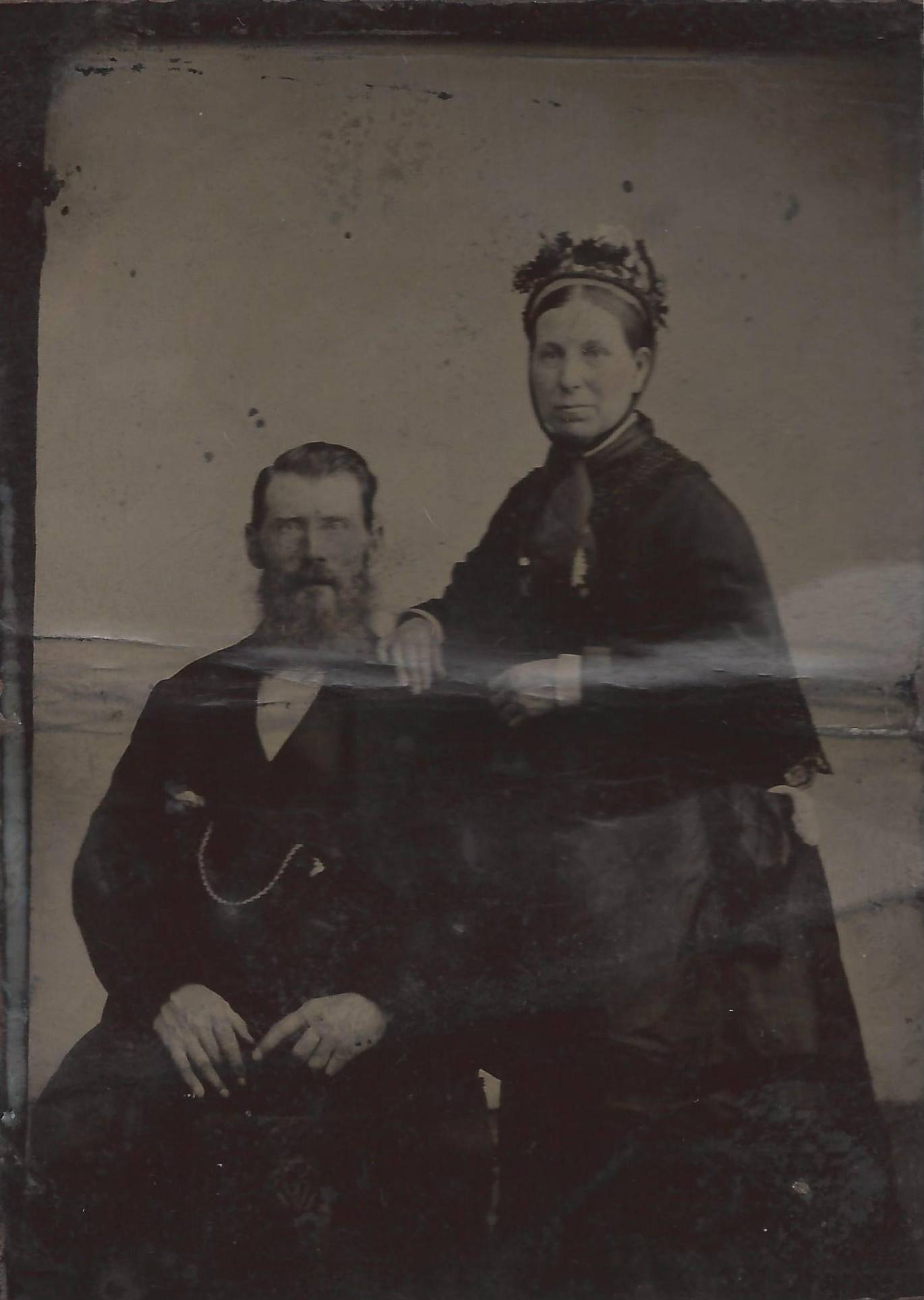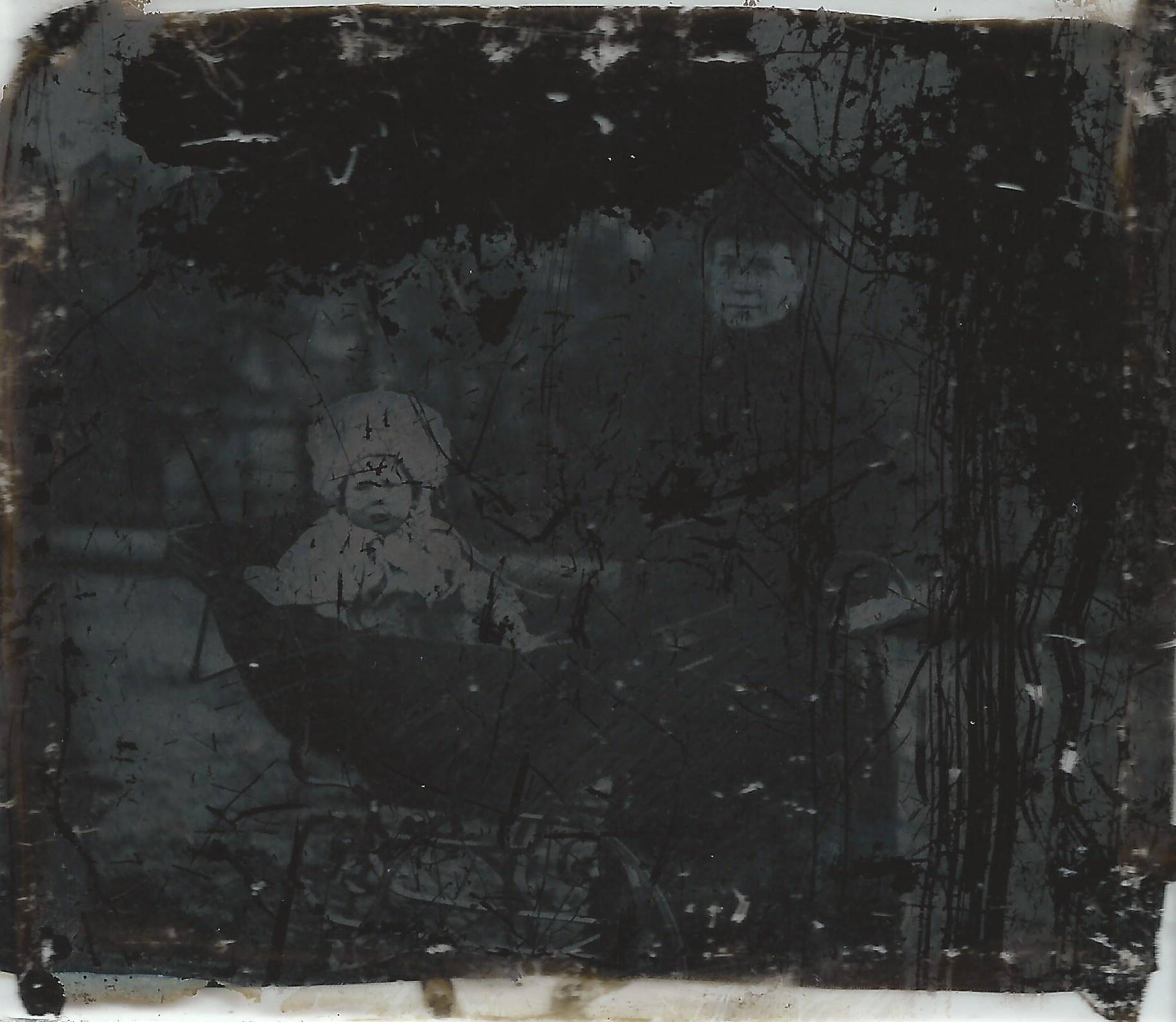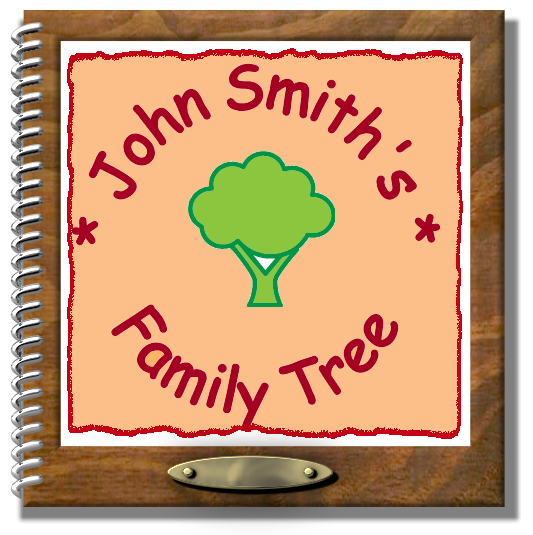John Smith's Family Tree Website

Dolt/Dolton
family ![]()
![]()
* * *
Part 2: Levi Squires Dolton (c1825 - 1885)
Early life and marriage to Eliza Clayworth
Levi Squires Dolton was born ‘Levi Dolt’ c1825 in Rickmansworth. He was the youngest son of William Squires Dolt and Elizabeth (maiden name unknown) and was baptised 16 October 1825. Like his siblings, Levi entered a life of service. It is not certain where he was for the 1841 census but a strong possibility is that he was a servant in London for the merchant Sheddon family. By 1851, he was working for Fowler Newsam at their Stamford Hill residence in Tottenham.
Only a few doors away from the Fowlers lived the Tucker family and their cook was Eliza Clayworth (c1821 - 1896). She had been born c1821 in Shoreditch, London, the eldest of ten children born to poulterer Francis Clayworth. Having a relationship with a servant in the house was almost always forbidden and female servants invariably had a ‘no followers’ rule imposed upon them to stop the few men they might encounter (making deliveries or a servant from another household). Eliza and Levi no doubt had to keep their relationship secret but then Eliza became pregnant and she and Levi married when she was six months pregnant.
Married women were generally not allowed to continue as servants as they had their own families to tend to. (The title ‘Mrs’ for cooks and housekeepers was more about their position within the household and their age, rather than reflecting their actual marital status.) Certainly Eliza would have been dismissed as soon as her pregnancy was revealed but it is possible she was able to conceal it and then hand in her notice because of her marriage. The couple’s next actions seem to indicate they went to great lengths to conceal the pregnancy.
Eliza was 33, well above the average age of females when they married. She and Levi married 30 January 1854, away from Tottenham at St James’ Church, Islington. They were married by banns which meant their intended marriage was announced over three Sundays in the home parish churches of the couple. Their 'home parish' was not declared to be Tottenham: they gave their address as St James Parish (Eliza) and Islington (Levi). Where they were actually living is not known. Levi would still have been living in Stamford Hill but it is very likely Eliza was staying with Levi’s sister Anne in Islington, who was one of their witnesses (Eliza's father being the other witness.)
Their first child, Emily Jane, was born three months later in Kew Lane, Richmond, and baptised in the parish church two months later. Eliza had no doubt gone to live with Levi’s brother David and his family during the later stages of her pregnancy. However, Eliza and Emily were soon able to return to Tottenham and from 1858 the family had the benefit of living in 1 Model Cottages, one of the homes Fowler Newsam had built for his employees’ families. In 1861, he also paid for the cost of St Ann’s Church to be built nearby, where no doubt the children were baptised. Levi and Eliza had seven children altogether: Emily, Fanny Elizabeth, Joseph, Eliza, Arthur, Annie and Henry. Many of them also entered service.
Life in service
Fowler Newsam was a Justice of the Peace and magistrate. He employed a cook, a ladies’ maid for his wife and female relatives, housemaids and a coachman (who lived in his own lodgings on the estate). Although Levi always described himself as a ‘house servant’, as the only male servant in the house he would no doubt have had many roles as butler, footman and valet. Eliza had a tendency to elevate his status to ‘butler’ on any official records which would have made him eminently respectable. A butler was responsible for the silver (kept in a butler’s pantry where he could sleep and keep guard!). He announced dinner, carved and served and locked up the house last thing at night. A footman performed a variety of tasks but because they were ‘on show’ so often, they were often chosen for their height and good looks. A footman over six feet tall could expect to earn more money than a shorter fellow! A valet helped dress the master of the house and act as a general companion. Levi would have been very busy and earned about £30 a year (£1,500).
Levi was highly regarded by his employer (which is possibly why his marriage and the birth of their first child took place far from Tottenham gossip). When Fowler Newsam died in 1875, he generously made provision for his servants. For those who had been in regular service with him for five years or more, he bequeathed to each of them £30 and an additional sum of £20 to those who had been in his service the longest. It is fairly likely Levi was eligible for this extra £20. Moreover, Levi, whom Newsam described as ‘my footman’, was given another £50 in addition to the other bequests “… in appreciation of [his] long time zeal and honesty”.
With his £100 bequest (worth about £4,800 today), Levi became a pub landlord (or ‘licensed victualler’), like his older brother George. He ran the Bull’s Head Inn in Wood Street, Chipping Barnet. Unfortunately, Levi was only able to enjoy his new profession for a few years. He died 31 July 1885, aged 59, having suffered from a diseased heart and cirrhosis of the liver (the latter not an uncommon cause of death for pub landlords). He left all his belongings and money to Eliza, his estate being valued at £130 (almost £8,000). Four of their children had emigrated to Australia by this time and his death was reported in the ‘Sydney Morning Herald’ 07 September. Eliza moved to Croydon and lived with youngest daughter Annie and died in 1896, aged 75.

An outing in a
charabanc
(Levi Dolton is sitting to the far right)

A possible
photo of
Levi and Eliza Dolton c1860s

A possible
photo of Eliza Dolton,
perhaps with a young Harry
Children of Levi and Eliza
Emily Jane (1854 - 1934) was born 24 April 1854 in Kew Lane, Richmond, Surrey, and baptised 04 June that same year in St John’s Church, Richmond. She worked as a housemaid to the assistant controller of the General Post Office in Hackney, London, and later became a cook for the Dunn family in Islington.
She married her aunt Anne’s step-son Walter Swan (1840 - 1922) 26 September 1881 in the Chipping Barnet Parish Church. Almost one month later, they emigrated to Australia on board the SS Orient, travelling via the Suez Canal which sped up the voyage considerably. They travelled as unassisted passengers which meant they paid for their fare, rather than be sponsored by a scheme or someone else. Depending on the ship and which class they travelled in, a fare might vary from about £15 up to £70 (£900 to £4,000). It is not certain how Walter earned the money for their fares. He has yet to appear on any census record as an adult but at his wedding he claimed to be a miner. At the time a miner might earn on average about £59 a year. They arrived in Melbourne 11 December and continued on to Sydney.
Why the Swans had decided to emigrate is not known but they had arrived during an economic boom. Their first child, Arthur, was born in 1882 but sadly died soon after. Their second child, Mildred Emily, also died within a year of her birth. Their other two children, Leslie Phillip and Dorothy, survived.
The 1890s saw an economic depression in Australia (and other parts of the world) and this may have prompted the family to look for new opportunities. By 1903, the family had moved to Beverley, Western Australia. One of the oldest towns in Western Australia, it was located east of Perth in the important agricultural area known as the ‘wheatbelt’. Walter and Emily spent the rest of their lives in Beverley where Walter mostly continued working as a clerk. Unlike her sisters back in England, Emily was able to vote in elections (English women did not get full suffrage until 1928). Walter died 10 March 1922, aged 85, and Emily died in July 1934, aged 80.
Fanny Elizabeth (1856 - 1938) was baptised in Tottenham 20 April 1856. As a teenager, she worked for the Dunn family (her elder sister later became their cook). In 1879 she married gardener Robert William Fry (c1856 - 1920) who had grown up two doors down from the Doltons. They moved to Waltham Abbey in Essex but within a few years, they had followed her sister Emily and emigrated to Australia. Like the Swans, they were unassisted passengers though for a gardener, the cheapest fare equated to a year’s earnings. It is quite possible family members gave them the money.
They arrived in Melbourne 30 November 1884 on board the SS Port Phillip. They travelled to Sydney where Emily had settled and Fanny and Robert remained there for the rest of their lives. They had four children altogether. Their two eldest, Walter Robert and Sydney John, had been born in England, but Herbert George (who sadly died in infancy) and Winifred Jennie Hazell were both born in Sydney. Robert died in 1920 aged 64 and Fanny died in 1938, aged 82.
Joseph (1857 - 1944) was baptised 22 November 1857 at Holy Trinity Church. Unlike many of his other siblings, he eschewed domestic service as a teenager and instead worked as a telegraph messenger. It was a busy and exciting time in the telegraph industry at this point as cables were being laid that would enable Morse code messages to be sent to many parts of the world, such as Australia. However, Joseph’s job was age-limited and at some point he left to become a bank clerk.
It is not known when Joseph emigrated to Australia but he was living in Sydney by 1886 when he married Eliza 'Lizzie' Jane Thom McMurtrie (1865 - 1906). They had five children: Hadley, Cecil, Gladys, Eustace (who died in infancy) and Marjorie. Sadly Eliza died in January 1906 and in December the following year, Joseph married Ethel Henrietta Hanks (1876 - 1934). They had two sons, Frank and Roy. The marriage broke down very quickly and in 1912, Joseph petitioned 'for a decree for the restitution of conjugal rights … on the grounds of desertion' against Ethel. This meant she was obliged to return to the marital home within a certain time, unless she had a good reason to stay away. The Australian states (before Federation in 1901) had started to change their divorce laws that had been given to them by Britain and in New South Wales a divorce could be petitioned for desertion after two years. In 1916, Joseph petitioned for the dissolution of his marriage on the grounds of desertion and in 1918 he was granted a decree absolute and was free to marry again. He did so the following year to Rosabelle Daisy Bathgate (1882 - 1946).
From 1896, Joseph worked as the secretary of the North Sydney School of Arts. At one point, he resigned under protest after 'friction' between the committee and membership. He was soon re-appointed but it is possible he was not the easiest of people to work with. He was certainly full of opinions, as evidenced by the sheer number of ‘Letters to the Editor’ which he wrote to the Sydney Morning Herald over many years, touching on such varied subjects as holding the New South Wales government to account for wasting public money, sewerage in Sydney Harbour, the importance of a transcontinental railway and federation, postal deliveries and taking care of the local environment. He was very eloquent and showed how well-read he was with quotes from Horace, Milton, former English Prime Ministers etc… Although he drew on his experience of the Old Country when pronouncing on a subject, he also clearly showed how proud he was of his adopted home. His letters virtually ceased just before the death of his first wife.
In 1909, Joseph was called to a coroner’s inquiry as a witness. He had seen a man strike another and followed the assailant. When verbally threatened, Joseph asked a young boy to follow while Joseph went to fetch the police. His evidence, corroborated by others, lead to the assailant being charged with manslaughter. It is not known if Joseph was called as a witness in a subsequent trial.
Joseph enjoyed playing chess and was quite possibly a member of the Chess Club associated with the School of Arts. He later worked as an estate agent and Rosabelle as a teacher. He died in 1944, Rosabelle two years later.
Eliza (c1859 - ?) was baptised 15 May 1859 at Holy Trinity Church. She worked as a ladies’ maid in Surrey for the Barondale family and then married Charles William Lacey (1859 - 1932) 23 March 1889 at St Mary’s Church, Finchley, London. Charles had been a butler and he left service to run a lodging house in Upper George Street, Marylebone, where they lived for many years. They had two children: Herbert Charles and Margaret Christie. Charles died in 1932 but it is not known when Eliza died.
Arthur (1860 - 1940) was baptised 02 September 1860 at Holy Trinity Church. It is most likely he never entered service as a teenager but helped his father run the inn. He followed in the footsteps of sister Emily and emigrated to Australia the very same month as she and her husband. However, unlike his siblings, he worked his passage over as a general servant on board the SS Carthage which left Gravesend, Kent, 27 October 1881. It was her maiden voyage and she was transporting mail from England to Australia. The ship had an unexpected stop in Albany, Western Australia, 06 December, following a case of scarlatina (reported in a Melbourne newspaper ‘The Argus’ that very evening thanks to the wonders of telegraphic messages). The SS Carthage reached Sydney 14 December.
The following year, Arthur married Mary Jane Bew (c1859 - 1946) They had nine children and adopted a tenth but their family life was struck by tragedy many times over. Their eldest son Arthur Walter died aged 7, Elsie (known as ‘Queenie’) aged 6, twins Blanche and Lily aged 7 months, Arthur Edwin their adopted son aged 2 and Percy aged 4 months. Only four children lived to adulthood: Hilda, Roy, Stanley and Harold. However, Lieutenant Stanley Dolton was killed in action in the Somme in November 1916. He had only been in France for a few months and had already survived a gunshot wound to the forehead. The letters he wrote to his family from the Western Front have been kept by the Australian War Memorial.
At the same time they were grieving for the loss of their children, Arthur was facing more personal troubles. In 1888, he brought an action against a man called Cater. Arthur was a commission agent and businesses placed orders for Carter’s goods through him. Arthur handed over the money to Cater and received a commission of 12 ½%. However, in 1887 after two years working together, Cater accused Arthur of fraudulently appropriating £2 (about £76 today) of Cater’s money – and of buying a horse and buggy with more of Cater’s money. Cater had allegedly called Arthur a 'swindler' in public and threatened him with arrest. Arthur was duly arrested but released after the charges were dismissed (though he had to spend £32 (more than £1,000) to engage legal counsel). He sued for £2,000 damages (£76,000) and the 'vindication of his character' as his business had suffered. When the case came to trial a year later, the jury found for Arthur and he was awarded £100 damages, with the Chief Justice of the Supreme Court telling Cater his original prosecution of Arthur for fraud had been a 'mistake'.
Arthur’s business was affected by the whole affair and, coupled with the economic depression, he faced bankruptcy proceedings in 1891. How and when he recovered his business dealings is not known but he might have had to work in many different jobs and locations to make ends meet. (The family moved many times around Sydney over the next fifty years.) In 1897 it seems he applied for a patent (number 7212) for 'compressed carbonated drink tablets'. Whether anything came of this is not known but probably not likely. In his later years, he worked as a jeweller. Arthur died 08 March 1940 and Mary Jane in 1946.
Annie (1863 - 1915) was born 19 May 1863 and baptised 29 June the same year at St Ann’s Church. She became a housemaid to the Beveridge family in London and then married Leonard Gould Box (1861 - 1949) 20 June 1886 at St Mary’s Church, Finchley. Leonard was a saddler and they moved across the River Thames to Croydon where her widowed mother joined them. Soon after they moved to Hampshire, and then to Worthing, Sussex. They had four children: Herbert, Dora, Leonard and Eric, Herbert dying in infancy. Annie died in Angmering, Sussex, in 1915, aged 51. Leonard died in Hampshire in 1949.
Henry (1864 - ?) was generally known as ‘Harry’ during his life. More information about him appears in Part 3.
Next: Henry Dolton
Footnotes













